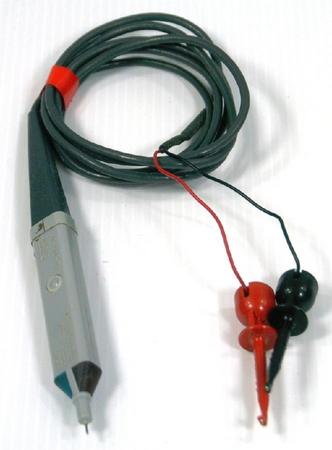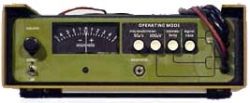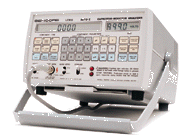Tools for PDP-8 repair
There seems to be some kind of persistent internet "meme" that you should use old test equipment to fix old computers (or radios). Bullshit.
So this is a list of tools that either (a) you didn't know you
needed or (b) you knew you needed but you either have or would buy the
wrong one. It doesn't include things like screwdrivers because
(a) you already knew you needed them and (b) there are few bad
screwdrivers. So substitute at your own risk. As an
example, when I suggest that you need Polyphenol Ether contact
lubricant, I don't mean that you should go to Fry's and buy contact
lubricant because the generic idea of "contact lubricant" is good, I
mean exactly Polyphenol
Ether contact lubricant is good.
This page is all about doing things correctly with the right
tools so they will last. If you are the sort of person who uses
car motor oil to lube your teletype because it's "good enough" this is
the wrong page for you.
Am I
missing something? Write me, nabil AT pdp-8.org.
- Teletype Tools
- General Tools
- Service Chemicals
- Logic Tools
- Tracing & Continuity
- HP Current Tracer
- Genrad Bug Hound
- Zero Beeper
Teletype Tools
I have a large collection (200+ items) of small teletype hand tools (including many for 5-level machines), so if you are local and need something special feel free to contact me for a loan. There must be lots of things to bend in a teletype because a 1/3 of them are various kinds of benders.
Crochet Hooks
These were sold by Teletype as
"spring pullers" and a very
handy for hooking and unhooking the small springs.
Needle
Oiler and 3-IN-ONE Motor Oil
For the KS7471 grease I and many other people use Lucas Red 'N' Tacky #2 but without much analytic justification other than experience. Note that some of the teletype lube instructions require mixing the oil and grease 50/50 so you'll want to test the pair for compatibility.
Atlantic Research Corporation DTS-1/Data Tek 9600
At one time I bought one that had some kind of factory modification done to it, it was the highest quality work and involved adding another circuit board (3 transistors, a hex inverter and an optoisolator), the front panel had the topmost loop output plug replaced with a BNC connector and 3 binding posts installed above the RS-232 connector. I'd avoid buying one with these modifications.
I have several of these, contact me if you are local and need to borrow one.
Tygon/Plastic/Rubber tubing for replacing model 33 hammers
General Tools
A modern soldering iron
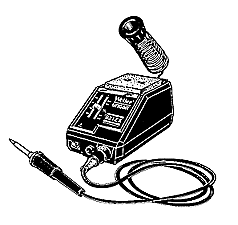 If
you are like me, you have a Weller
WTC-series soldering iron somewhere on your workbench. These were the
mainstay of the industry, and used a curie-effect temperature
regulation system (each tip programmed the iron for a different
temperature). They were low-voltage, grounded-tip, and reasonably
safe (for a sub-$200 iron).
If
you are like me, you have a Weller
WTC-series soldering iron somewhere on your workbench. These were the
mainstay of the industry, and used a curie-effect temperature
regulation system (each tip programmed the iron for a different
temperature). They were low-voltage, grounded-tip, and reasonably
safe (for a sub-$200 iron).
Times have changed, it's time to get a new iron. Although the newer generation of the WTC series started incorporating better ESD protection, they couldn't eliminate a fatal design flaw, and that was the arbitrary times when the heater kicked in and out, creating a EMF spike which can be coupled into your workpiece.
Weller makes several new irons that use zero-crossing (electronic) control along with much better ESD control and protection again stray currents and fields. The EC series is nice, and ranges from $200 to $400. The Weller 921ZX1 is an inexpensive alternative (I picked mine up at Fry's for under $80). It has a slide control for setting the temperature (in degrees, not "watts", which is useless like the cheap ones), and reasonable selection of tips from the beefy to SMD. A nice feature is a bi-color LED which monitors the heating circuit's power output ratio. The picture to the right is the 921ZX.
If your soldering iron isn't temperature regulated it's useless for computer work.
If you can find a used one Metcal irons are very nice.
Avoid:
Cheap
unregulated
temperature
irons,
non-ESD
irons,
arbitrary
thermostat
irons.
The
921ZX
is
good and inexpensive.
Edsyn SoldaPullt
Squeeze-type
IC Lead Straightener 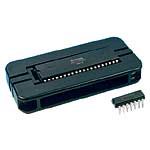
Service Chemicals
DeoxIT (the red ones)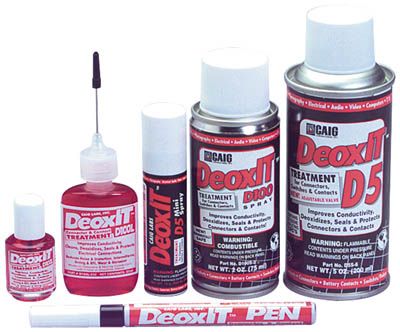
DeoxIT is a group
of service chemicals for
restoring electrical contacts & plated connections. It
is reactive, and actively removes corrosion and oxidation.
It is also somewhat persistent, and will remain on connectors
that
are mated and unmated, moving wipers, etc. DeoxIT is well known,
recommended by several OEMs, and generally compatible with most
materials. Personally I only use it when I'm dealing explicitly
with corrosion, oxidation or on high-current applications (like power
supply connectors). Deoxit is especially vital on high-current
mated molex power connectors where an I^R/mechanical thermal runaway
effect routinely destroys them, for example the J4/J5 power connectors
and fuse holders in an 8E, but you need to do it before the damage
starts! There are several concentrations from 5 to 100% for
various applications, I'd stick with the low concentrations (the base
product is an oleic acid derivative) for splashing around.
Spraying a bunch on a clean rag and then using that to clean off
dull-looking card edges seems particularly effective and leaves some
behind to clean the mated connector.
Polyphenyl Ether contact lubricant
I use this to
make card insertion easier but
these can also reduce contact resistance (a lot!). If the product
is pure PPE & carrier there is really no downside to using these on
any high-insertion force connector, they can only help. Very handy for OMNIBUS
cards (spray on the card, not the backplane). PPE is
a very
light
lubricant, non-reactive, non-conductive and typically with few
compatibility or contamination problems. It must be replenished
if you do frequent insertion/removal cycles. The 6-ring version is a
little more viscous and a little longer life. Specifically avoid the
"wipes" products, they leave little strands of the pad
stuck to the sharp bits of a card edge which are a real hassle to
remove. Just get the aerosol spray or liquid (not pure, 2%). Use is
simple, clean the
contacts first if they are dirty, spray the PE on, let it dry.
For those of us with the
occasional brush with
modern computers it's also what I use on big pin count packages
like Intel 486's when the need to go into a normal (i.e., not ZIF)
socket. MG Super Contact
Cleaner and Techspray Rid-Ox
are two industrial grade products you could try, but there are also
"purer" aerospace/aviation grades. You want one that evaporates
completely without any extra oils or junk, I liked the Chemtronics Gold Guard as it only
had alchohol and PPE in it, but I'm not sure if it's made anymore.
Avoid:
Anything
except
Polyphenyl
Ether
contact
lubricant. Any of the
'wipes' products.
Heptane label removers: Original Un-Du and
Bestine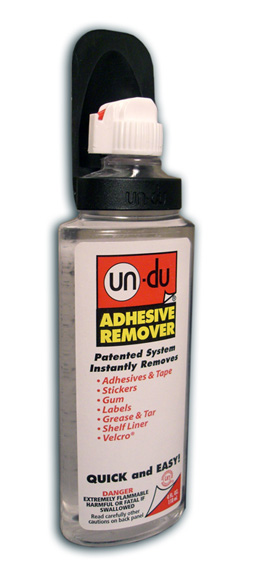
Avoid: Reformulated (California, VOC safe) Un-du. Anything with xylene, toluene, benzene, acetone or methylene chloride in it. I like to avoid methanol (methyl alcohol) as much as possible. Goo Gone Xtreme Remover (toluene, acetone & methanol) would be top on my 'avoid' list, but it probably works great.
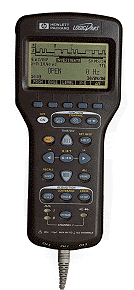
Logic Tools
HP E2310A LogicDart
It’s a small,
hand-held 3-channel logic analyzer (or small digital scope) with an LCD
display, the nice thing
about it is that you can program the logic threshold, so it can
be used on things like ECL and negative transistor logic
computers.
Very light, it's reasonable to use as a logic probe (nice
lights and beeper), I particularly like the needle-sharp probes.
Discontinued,
but HP still has this
data
sheet online.
Avoid: Buying these without the special probes, they are useless without them.
Tektronix P6401 Logic Probe
Mostly I use my LogicDart, but a
stand alone
logic probe is very handy, especially one that is easy to read like the
Tek with it's bright, omnidirectional red and green lamps right at the
tip. The "memory" is easy to use and inuitive, it allows you to
catch a transition without watching the probe. The Tek uses
incandescent lamps, only
TTL/DTL and not very electrically rugged but I have yet to find any
other that is the perfect combination of
functionality, size and ease-of-use. If you are searching for one
on
ebay, don't accidentally get the version with the BNC on the end, the
one you want has a red and black power clip.
The HP 545A would
be
my
second
choice (has a long sharp tip & CMOS mode)
but the
indicator uses OFF/DIM/BRIGHT instead of Tek's RED/GREEN. It's
long, thin body can be an advantage over the Tek's short stubby one but
I still prefer the Tek, the performance and human interface is just
perfect.
If you are using a logic probe you don't want to be thinking about it
how to read it, you just want it to be a transparent little
visualization of the circuit node. That's what the Tek is.
HP 548A Logic Clip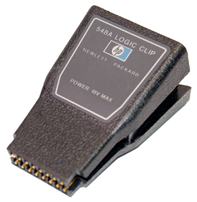
"The Logic Clip is an extremely handy service and design tool which clips onto dual-in-line package (DIP) ICs, instantly displaying the states of up to 16 pins. Each of the clip's 16 LEDs independently follow level changes at its associated pin. Lit diodes are logic High, extinguished diodes are Low."
I have several of these, contact me if you are local and need to borrow one.
HP 10529A Logic Comparator
"The HP 10529A Logic
Comparator clips onto powered TTL or DTL ICs and detects
functional failures by comparing the in-circuit test IC with a known
good reference IC inserted into the Comparator. ... Any logic
state difference between the test IC and reference IC is identified to
the specific pin(s) on 14 or 16-pin dual in-line packages on the
Comparator's display. A lighted LED corresponds to a logic
difference. Intermittent errors as short as 300 nanoseconds (using the
socket board) are detected, and the error indication on the
Comparator's display is stretched for a visual indication. ..."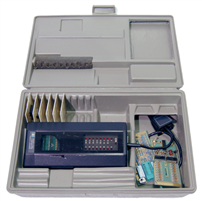
If that isn't clear enough, you
clip onto a chip, the inputs
go to the inputs of your known good reference IC, the outputs are
XOR'd with the outputs from the circuit and displayed on a
display. If you see a light, that node in the circuit isn't
following your reference chip. Reference chips are on little
carriers you program (by drilling!), you can build up a library
of common devices for your system(s) of interest. There is also a
generic card which can be programmed by dip switches for one-off
tests. These often came in kits like the 5011T with logic clips
and probes.
I'm building up a library of pre-programmed cards for common PDP-8 TTL chips.
I have several of these, contact me if you are local and need to borrow one.
Avoid: Paying too much. Just be patient, you can probably get one for $30 or less.
HP 546A Logic Pulser
General Circuit Testing
HP 547A Current Tracer
“The HP 547A Current Tracer is a hand-held probe which enables the precise localization of low-impedance faults in electrical systems. The probe senses the magnetic field generated by a pulsing current internal to the circuit or by current pulses supplied by an external stimulus such as the HP 546A logic pulsers. Indication of the presence of current pulses is provided by lighting the indicator lamp near the current tracer tip. Adjustment of probe sensitivity over the 1 mA to 1A range is provided by the sensitivity control near the indicator. The probe is self-contained and requires <75 mA at 4.5V to 18V, from any convenient source.”
I don’t use this very often, but
when I need it, I really
need it. It’s used for finding things like shorted input
gates, stuck tri-state buses and broken/shorted traces.
I have several of these, contact me if you are local and need to borrow one.
General Radio (GenRad) 2220 Bug Hound
I have several of these, contact me if you are local and need to borrow one.
Zero Beeper
This is a continuity tester that
uses an extremely low voltage
(say, 100mV) so
that it won't turn on any of the semiconductor junctions in a circuit.
I haven't
seen many around recently, but Contact East (a good source for almost
every tool
on this page) private labels one, the Zero-Current
Audible
Continuity
Tester. It is a must
have tool when you are trying to trace out continuity on a
circuit board.
Huntron Tracker 2000 (or similar)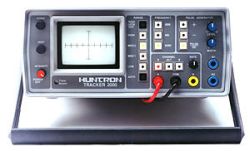
IC Test Clips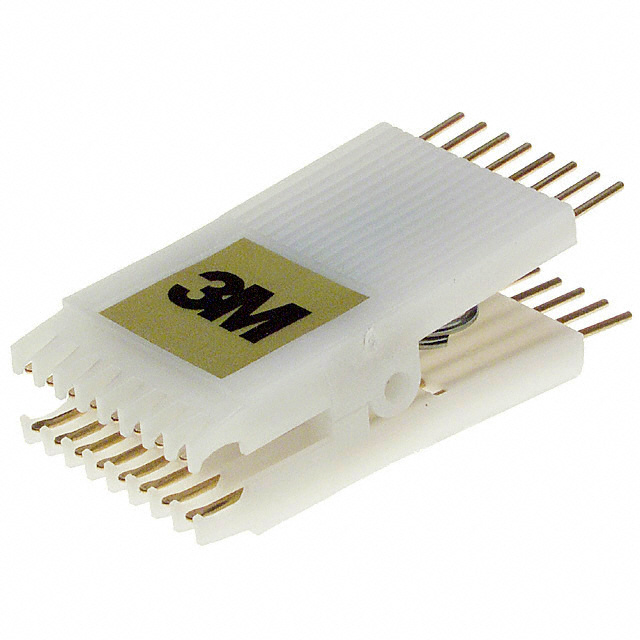
Tek Scope Current Probe (for core memory repair)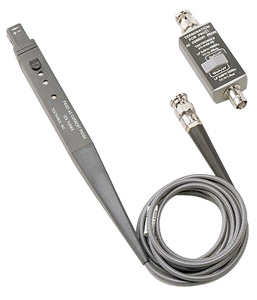
Transistor testing
NB: I removed the Sencore TF46 since people are using this guide to select which piece of test equipment they are buying for a particular task The TF46, although good, was inferior to B&K and no comparison against the Vu-Data & Leader. The Seccore switches are just too flaky, the 520B seems to be able to do in-circuit better and the TF46 uses really crappy, thin wired-in leads (which are always breaking at the ends) instead of banana jacks. I'm sure some people prefer the TF46 over the B&K.
B&K 520B
(common)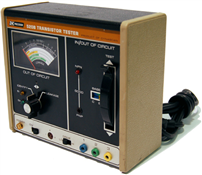
Vu-Data 5110
(hard to find)
I have a couple of these, contact me if you are local and need to borrow one.
Leader LTC-906 and LTC-906A
(very hard to find)
Capacitor testing
Avoid: Capacitor meters, radio cap testers, Vintage Eico/Sprague/Paco/Heathkit testers, units with magic-eye or tuning-eye tubes, anything built into a DMM or LCR meters & bridges.
Sencore Z-meters
Any of the Sencore Z-meters such
as the LC53, LC75, LC77,
LC101, LC102 (pictured) or LC103
would all be good choices for large electrolytics that you can isolate,
used LC53 & LC75's are routinely on Ebay
for under $200. The lower
end are out-of-circuit only. As you progress in price
some have the ability to measure ESR, some ESR in-circuit and then
in-circuit capacitance as well as ESR. I'd say you'd virtually
never need a tester like this for digital board repair, only analog,
power supplies
& motor run caps. Some of these have ringers which are good
for SMPS and monitor repair.
Almost any Standalone ESR meter
Measures the most common failure
mode of capacitors. Hands-free and a beeper are nice features to
have.
In-circuit is a
requirement, you want one with a very low p-p output voltage (<20mV)
and you'd like something at least a little electrically rugged (or
repairable) so it
doesn't blow up when you accidentally hook it up to a charged
cap. I use a CapAnalyzer
88A
most of the
time (on modern stuff), it also does a DCR (short)
test, but the probes are really designed for small chip caps.
My next purchase is going to be a Capacitor
Wizard with the protection
kit. Along with the more convenient leads, these are 5mv,
high-accuracy (log analog meter) 100khz testers and they have a beeper
which is handy. You can use some ESR meters as a sort of
continuity/leakeeker-like device for finding shorts. Also see Anatek's
Comparison of ESR Meters.
Tenma ESR meter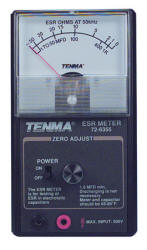
Wire Wrapping
Wire
Manual wrap/unwrap tools
Electric wrapping tools
Standard Pneumatic is what you are looking for, but I have used the Gardner Denver with good results.Avoid: Hobby brands or battery powered units.



